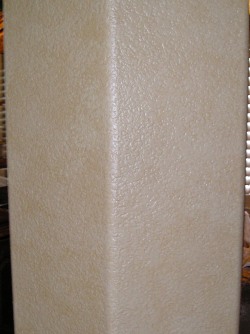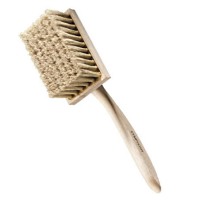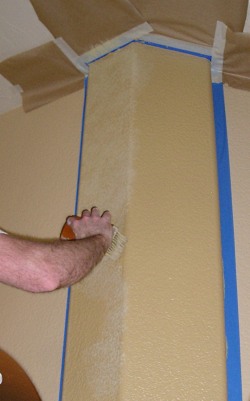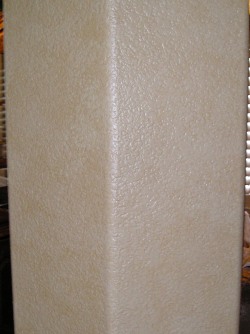
The same technique for handling a paint brush that makes for good stencil results is also useful for creating very attractive results on the walls of your home.
With paint stippling, you can create anything from a soft dotted effect to a solid color.
Stencilists have used pouncing for years to add shading to stencils of vines and flowers. Now you can do the same with an entire wall.
This gives you so many creative options. You can create subtle horizontal stripes that seem to make the room wider than it really is, without actually placing stripes on your walls.
By controlling the amount of paint you put down or take away, you trick the eye without being obvious about it.
Paint Stippling Tools You’ll Need
Stippling Brushes
Brushes come in several sizes and types. You’ll find that there are longer stippling brushes that look like heavy duty commercial floor brushes. These can be awkward if they don’t have a handle, and they get heavy to work with. There are also square stippling brushes that are easier to work with. They are just small enough to fit in your hand, yet large enough to pounce a decent amount of space at one time.
There are also round pounce brushes which are typically designed for use with stencils. These brushes have a handle just like any other paint brush does. Instead of the bristles being crimped onto a flat ferrule, they are gathered together into a round ferrule. Then the bristles are cut flat. These brushes are best if you are working small areas or using a stencil.
If you’re doing a wall, you can avoid purchasing the more expensive pouncing brushes. Just take a natural bristle brush that you’ve chopped off about 1 inch from the metal ferrule that holds the bristles in place. This will make it easier to pounce the paint in corners and other harder to access areas.


Glaze or Paint
There are special glazes that make stippling easier, but they aren’t essential. You can stipple using paint. The benefit of using a glaze is that it’s designed to allow the color of the base coat to shine through.
Rags
You can use shop towels to stipple large areas with. The effect is similar to using a stippling brush.
Paint Stippling Technique

Paint stippling can either be an additive technique or a take-away technique. When it is used as an additive technique, you dip the stippling brush into the glaze/paint. You remove the excess glaze or paint from the brush either by first pouncing it on a Styrofoam plate, piece of cardboard or a rag. Then you jab the brush against the wall using a pouncing motion. You spread the paint by working in tiny circles. This method usually requires less paint as you don’t take paint away. Rather, you control how much paint you apply.
When paint stippling is used as a take-away technique, you brush your glaze/paint onto the wall as thickly or thinly as you desire. Then you start pouncing the dry stippling brush into the glaze. This takes some of the glaze away. When paint starts to build up in the brush, you have to rinse it clean and dry it with a towel.
You can also use a towel as your stippling tool when you are using the take-away technique. Fold a rough shop towel until you can hold all the corners and seams in your hand. Blot at the glaze you have placed on the wall until you achieve the look you desire. Use the same pouncing technique, and work in small circles.
Paint stippling is a very easy technique to master. And the results are very satisfying, especially if you want a subtle effect with a classic feel. Just remember that your base coat will shine through a glaze, so use colors that complement each other.


